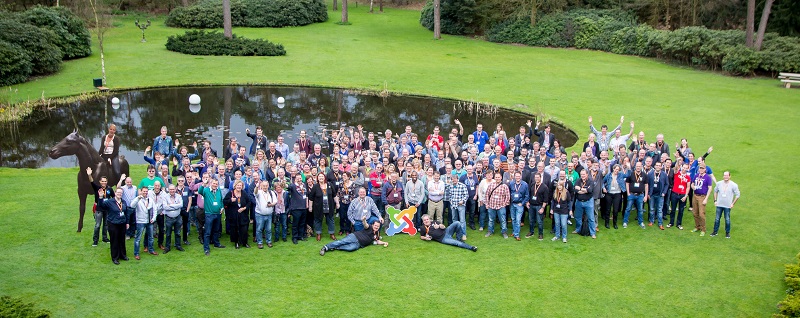- Details
- Hans
- General
- 3049
A little while ago Jisse, from Yireo, asked if I would like to write a blog for Yireo. This blog would be about the Joomla extensions he writes. Of course I was flattered and I started writing. I picked the extensions myself, these three looked like very usefull extensions to me. I hope you also like them. This blog on Yireo can be found here.
Dynamic404
Dynamic404 is a powerful tool, for example to use for pages not found on your website. You can let Dynamic404 choose the most relevant page to redirect to or to redirect to a custom article or menu item. Dynamic404 can handle 404-errors but also: 400 Bad Request, 401 Unauthorized 403 Forbidden and 500 Internal Server Error. You can choose to use an article or menu item for those redirects.
And not only can Dynamic404 be used for redirecting HTML client errors but it’s also possible to use it for short URL redirects. This can be very useful for marketing! See more about Dynamic404 on its dedicated page.
Piwik
Most people are familiar with Google Analytics to get insights into the website traffic. But there is an alternative, Piwik. Piwik is a free, open source, standalone, analytics platform. And the smart thing about Piwik is that it can use a PHP API. The benefit of this is that you don’t need a cookie to get the analytics and you don’t have to warn your visitors for the analytics cookies.
You can easily install Piwik on your server, for example in a subdomain and use the Yireo Piwik plugin to setup the PHP API. The Piwik plugin is available here.
ScriptMerge
When you take a look how many javascript and CSS files are being loaded one by one you can imagine this can slow down your website. Yireo has the perfect tool for this problem and it’s called ScriptMerge. Not only can this plugin combine the separate files into one but it can also compress it or use GZIP and thus saving bandwidth and time. It’s also possible to exclude items like certain files, stylesheets, menu items or components.
Another option is to make use of data-URIs to transform images to a base64-datastream. This way the total sum of HTTP-request will go down and will make your website yet a little faster. A maximum file size can be set for skipping images that are too large. ScriptMerge is available for download here.
- Details
- Hans
- Joomla
- 2797
Once again, I was visiting the Joomla!days Netherlands this year, which started on friday 15 april with a Pizza, Bugs & Fun (PBF of #pbfnl). When I arrived they were busy with fixing the WiFi signal but soon after that the hotel delivered a nice big switch and lots of UTP cabes so everyone could connect to the internet. Personally, I felt quite at home because it brings back memories of the LAN-parties I visited in the past.

- Details
- Hans
- General
- 2409
In october 2015 Google announced AMP (Accelerated Mobile Pages), used for making smaller web pages to be shown on mobile devices. Many pages are now not optimized for mobile use which results in downloading lots of data which can be optimized.
What is AMP?
AMP HTML is actually normal HTML but with some restrictions to get reliable performance and some extra extensions for rich formatting. The AMP JS library is used for the speedy rendering of the AMP HTML web pages. What really happens is that your web page is stripped from all the unnecessary elements with minimal resources. Also Google offers it's own AMP CDN.
Why is this important?
Google will now show AMP results combined in your search results. So the expectation is websites offering an AMP-version will score better in it's search results.
How can I use Google AMP on my Joomla! website?
- Details
- Hans
- Tips
- 2380
There are several websites which can be very handy for people who want to optimize a website. Here's a list of the websites I use.
This is the website of Simon Kloostra, wellknown of his SEO- en and speed up your site knowledge. On his site he explains which steps you can teake to optimize your own site for SEO or making your website faster.
You can scan your website here for pointers of the Google Webmaster guidelines. Besides this there are also lots of interesting articles about enhancing your website.
On this website you can scan your website on some technical performances, after the scan you will be given the score and some information on what you can do to optimze. Also interesting is the Yslow and waterfall measurement of your website.
A brief scan of your website can be performed here. You also have the choice in selecting the server from where the scan will be performed. If you have a Dutch website for instance, it's not usefull the scan it from the USA but it is from Amsterdam.
- Details
- Hans
- Tips
- 2655
Google also offers fonts you can use in your website, you can find them at Google fonts . If you want to use these fonts in Joomla and the template you're using doesn't these fonts it self you can add the fonts yourself. The only thing you have to do is find the font you like and edit two files. Here follows the description on how you can make this work.
Find the font you want to use on Google fonts and click on the button Quick use. On the next page you can copy the link from option 3 "Add this code to your website".





